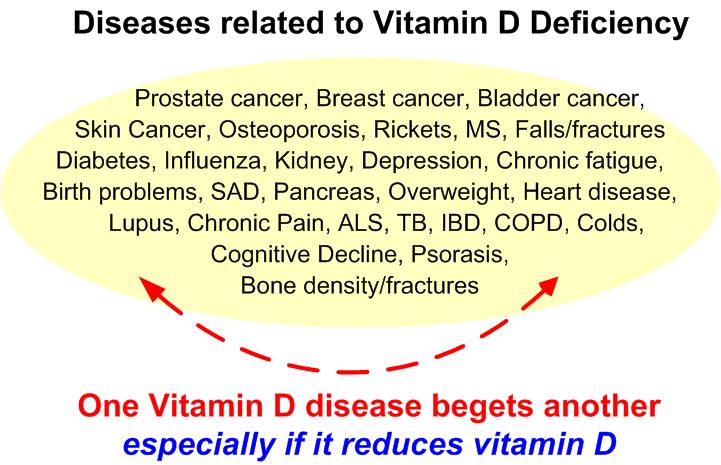Increase vitamin D levels if they are low
A Scoping Review of Vitamin D for Nonskeletal Health: A Framework for Evidence-Based Clinical Practice
Clin Ther. 2023 Apr 18;S0149-2918(23)00127-3. doi: 10.1016/j.clinthera.2023.03.016 PDF is behind a paywall
Heitor O Santos 1, Carlos Eduardo E Martins 2, Scott C Forbes 3, Felipe M Delpino 4
Background: Low serum 25-hydroxy-vitamin D [25(OH)D] levels are prevalent worldwide. Although the benefits of vitamin D supplementation have focused on skeletal disorders (eg, rickets, osteomalacia, osteoporosis), emerging evidence for nonskeletal health merits further discussion.
Purpose: The purpose of this review was to critically examine the vitamin D supplementation literature pertaining to nonskeletal health to help guide clinicians.
Methods: A scoping review that included observational studies and randomized clinical trials (RCTs) was performed. Evidence from meta-analyses and individual RCTs are discussed, and controversies and future directions are considered.
Findings: 25(OH)D deficiency is a ubiquitous condition associated with multiple nonskeletal diseases, including
cardiometabolic (heart disease, diabetes, and kidney disease),
immune (HIV/AIDS and cancer),
lung (from traditional chronic disorders to coronavirus disease 2019), and
gut diseases.
Vitamin D deficiency also affects health across the life span (children, pregnant, and elderly), mental illness, and reproduction in both men and women.
In contrast, vitamin D supplementation does not necessarily improve major medical outcomes, even when low 25(OH)D levels are treated. Screening for 25(OH)D status remains an important practice, primarily for high-risk patients (eg, elderly, women with osteoporosis, people with low exposure to sunlight). It is reasonable to supplement with vitamin D to treat 25(OH)D deficiency, such that if beneficial nonskeletal health occurs, this may be considered as a coadjutant instead of the central tenet of the disease. Furthermore, optimizing dosing regimens is an important clinical consideration.
Implications: Although 25(OH)D deficiency is prevalent in nonskeletal diseases, there is no uniform evidence that vitamin D supplementation improves major medical outcomes, even when low 25(OH)D levels are corrected. Findings from RCTs warrant caution due to possible selection bias. Overall, vitamin D supplementation must be guided by circulating levels as a reasonable medical practice to correct 25(OH)D deficiency.
Some studies on restoring Vitamin D
Restore your Vitamin D levels before surgery (Gastric Cancer in this case) - Jan 2023
Rapidly restore Vitamin D levels with 10,000 IU per kg for children in ICU – RCT 2024
6 times to 55 times more likely to get the following health problems if Vitamin D deficient
{include}
CLICK HERE for entire 3X to 55X list for more information
Restoring vitamin D will prevent many subsequent diseases

VitaminDWik – Optimum category contains
{include}
